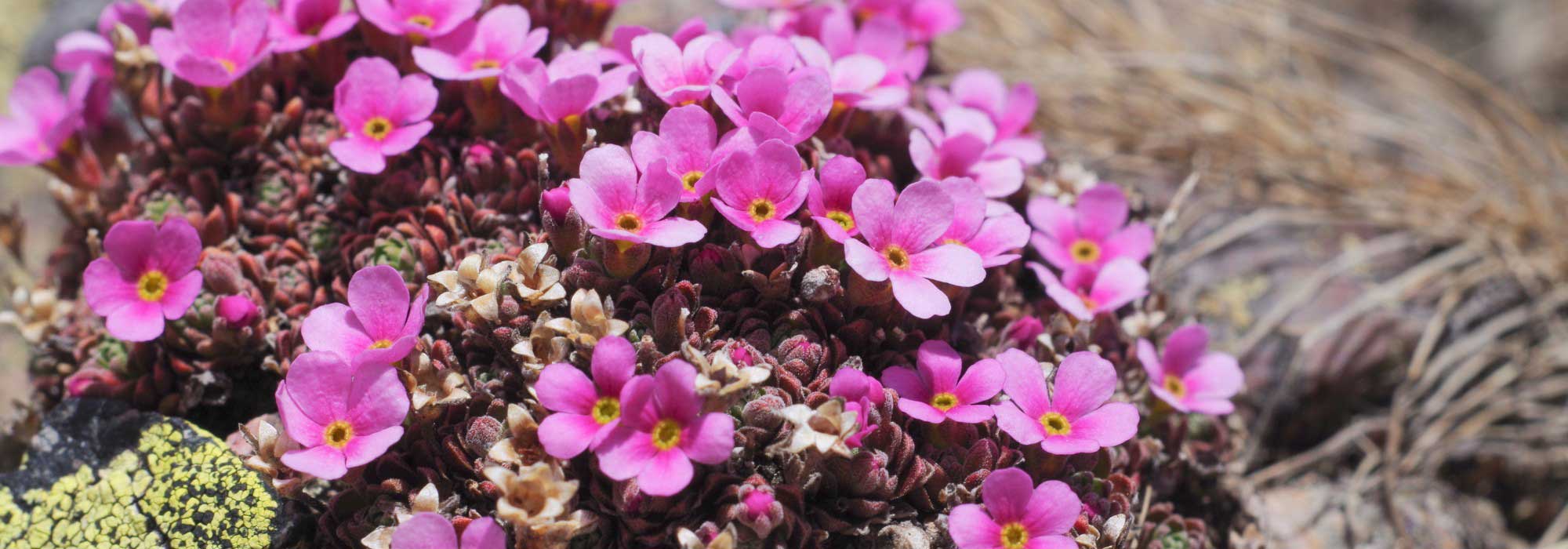
Androsace: cultivating, planting, and care
Contents
The Androsace in a few words
- Androsace is a montane plant, perfect for rockeries and borders that are not too dry
- In spring, it offers white or pink flowering
- It features attractive rosette foliage that remains evergreen in winter
- It thrives in well-drained, calcareous, and stony soil, but prefers it to be fresh
- Hardy and undemanding, it simply dislikes overly wet soil in winter
The word from our expert
Native to our Alpine mountains, the Androsace is a small montane plant often referred to as “the jewel of the rocks”. It knows how to carve its way through the harshest conditions, growing in rock crevices and scree. In our gardens, this close cousin of primroses finds its perfect place in rockeries, borders, or dry stone walls, where it adds a touch of simplicity and natural elegance. In late spring, from May to June, it adorns itself with charming umbels of white or pink flowers, towering over rosettes of evergreen leaves. It forms small tapetum clumps, never exceeding 30 cm in height or spread. Slightly delicate to cultivate, this plant requires typically montane growing conditions to thrive. It prefers very well-draining soils, even calcareous ones, though not too arid, mimicking its natural habitat, while also needing some coolness in summer to flourish. It doesn’t need much soil to grow and will thrive nestled among large stones.
Discover this emblematic little perennial of rockeries, as hardy as it is unpretentious!
Description and Botany
Botanical data
- Latin name Androsace sp.
- Family Primulaceae
- Common name Androsace
- Flowering April to July
- Height 7 to 30 cm
- Exposure sun, partial shade
- Soil type well-drained and fresh, stony
- Hardiness down to -23°C
The Androsaces, belonging to the Primulaceae family, are close cousins of primroses. These small alpine plants, native to the north-western Himalayas, form a fairly diverse group. The genus includes around thirty perennial, biennial, or annual species, growing in the wild at altitudes of up to over 4,000 metres, directly on rocks or in scree, dry meadows, and rocky areas, accustomed to extreme conditions, like the Alpine Rock Jasmine (Androsace alpina), an endemic species of our Alpine mountains and protected. Among the most cultivated species in our gardens are the Androsace sarmentosa, characterised by its silvery rosettes covered in white hairs, the A. septentrionalis, and its cultivar ‘Star Dust’, prized for its small white flowers that appear abundantly in spring, like a constellation, or the A. sempervivoides, which resembles houseleek, with its thick, fleshy foliage arranged in compact rosettes.
Rather slow-growing, Androsaces form, depending on the species, small compact tufts, either upright or creeping, not exceeding 25 cm in height and 20 to 30 cm in spread. They slowly spread into low cushions, rooting into the smallest cracks. The foliage offers a beautiful diversity in both shape and colour. In perennials, it is evergreen, persisting throughout the year, summer and winter alike. It ranges from bluish-green to silvery. It can take the form of almost succulent rosettes, which root upon contact with the soil, much like houseleeks resembling small artichokes, or, conversely, basal lanceolate and toothed leaves.
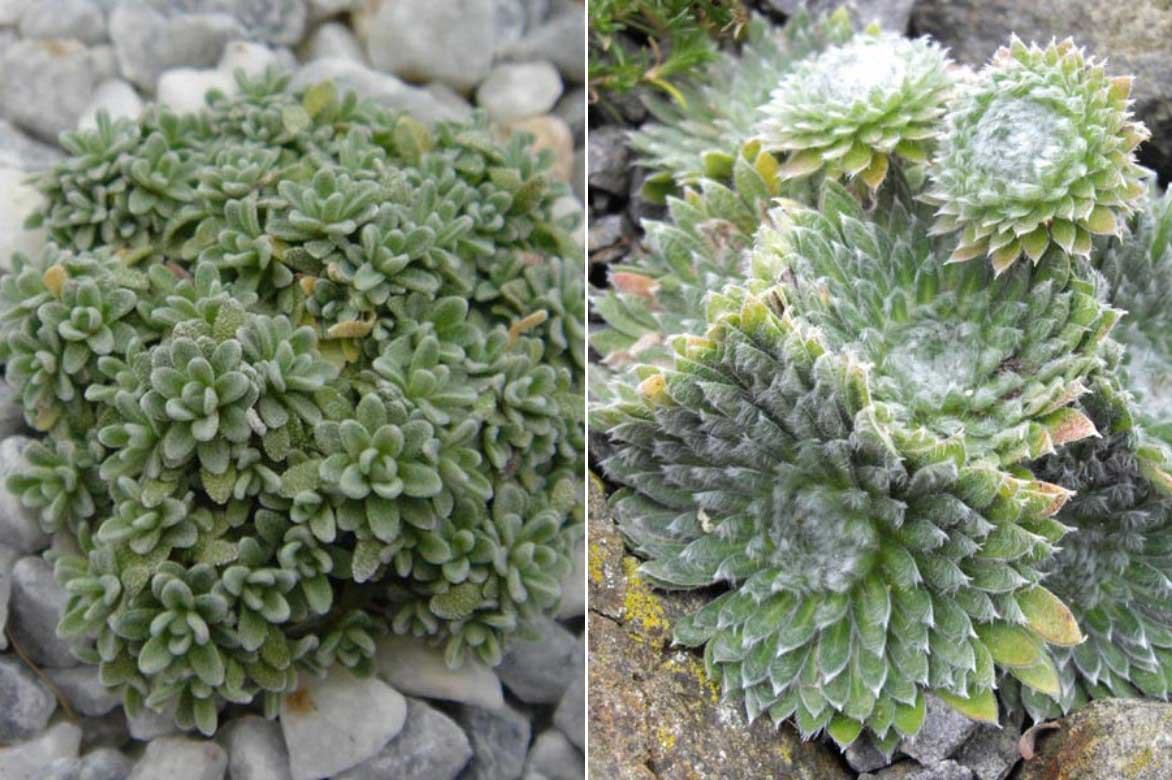
The foliage of Androsaces can take very varied forms depending on the species. Androsace vandellii and Androsace sarmentosa ‘Chumbyi’ (photos: Ghislain118).
The flowers of Androsaces, generally white or pink, sometimes violet, dark red, or more rarely yellow, emerge in spring above the foliage. They are sometimes borne on a flower stalk that can reach up to 20 cm in height. Arranged in clusters or umbels at the top of short stems, they are usually star-shaped and consist of five petals with five well-defined lobes that unfold around a central yellow to red heart. The delicacy of their petals, often slightly fragrant, contrasts with the robustness of the basal leaves.
The shades of white and pink in the flowers vary by species, offering a subtle palette of colours. For example, the Androsace septentrionalis ‘Star Dust’ is adorned with small white flowers that seem to float above the silvery rosette, while the Androsace sarmentosa displays mauve-pink flowers that form a lovely contrast with its silvery foliage.
The flowering of Androsaces is not just a visual delight; it also attracts pollinators such as bees and butterflies.
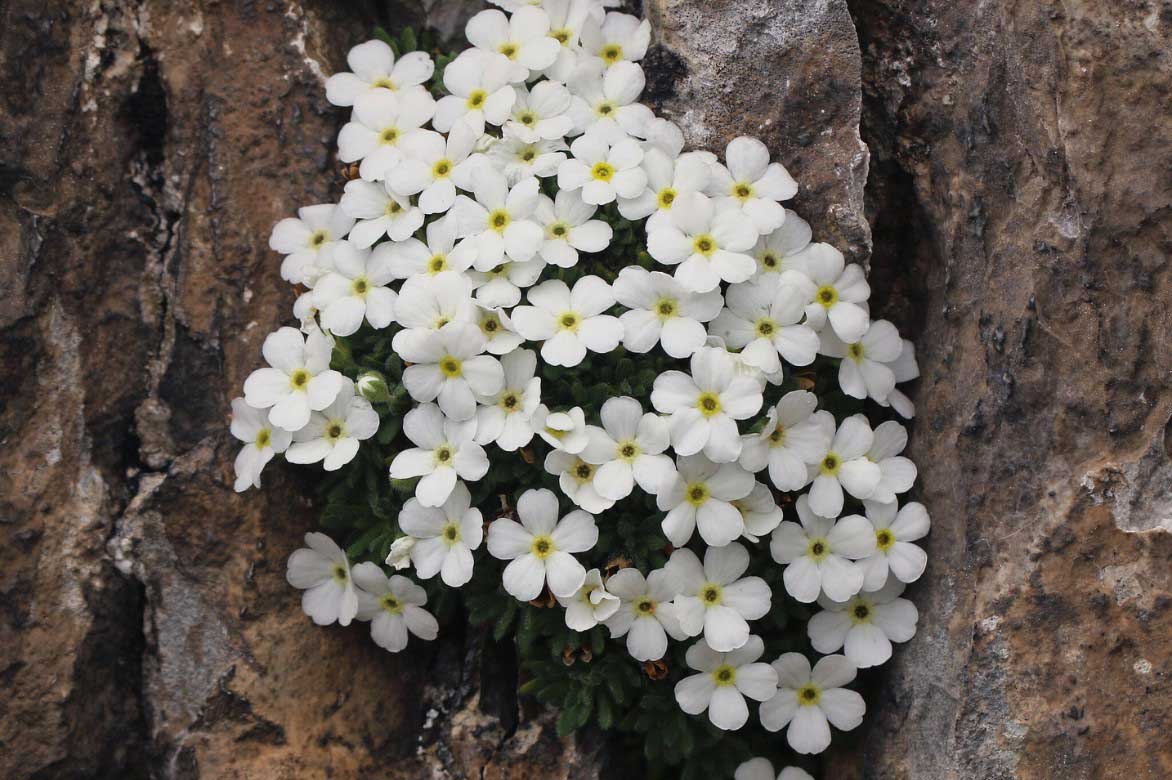
Androsace hirtella
After flowering, the flowers turn into small dry capsules, which open at maturity to release the seeds, allowing the Androsace to disperse and reproduce. The seeds are small and light, adapted to spread in the challenging montane environments where Androsaces thrive.
Main species and varieties
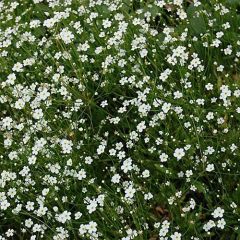
Androsace septentrionalis Star Dust
- Mois de floraison May to July
- Hauteur à maturité 25 cm
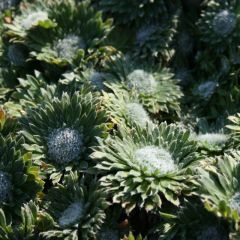
Androsace sarmentosa
- Mois de floraison July, August
- Hauteur à maturité 15 cm
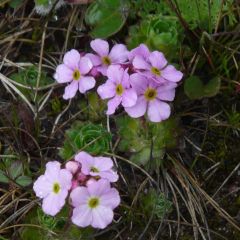
Androsace sempervivoides
- Mois de floraison May, June
- Hauteur à maturité 7 cm
Planting Androsace
Where to Plant Androsace?
A quintessential montane plant, Androsace can withstand harsh climatic conditions (down to -25°C) and poor soils. Its adaptation to alpine environments allows it to survive extreme conditions, enduring cold winds and snow. This hardiness makes it particularly suited to rock gardens where conditions can vary. It can even be grown in fairly cold regions. Androsace particularly dislikes overly wet soils in winter and heavy soils that retain water and cause root rot, as well as heatwaves and excessively dry conditions in summer. Therefore, if you live in a rainy region, it may need shelter in winter, protected from rain and stagnant moisture.
Androsace requires well-drained soil to avoid excess moisture, which could be fatal. A mix of compost, sand, and gravel is ideal to mimic its natural rocky habitat. It thrives best in soil that remains cool and appreciates limestone and stony soils. This perennial will thrive in rock gardens that aren’t too dry, as it isn’t the most adept at arid conditions. Ordinary soil arranged between large stones is perfect. It prefers a sunny or lightly shaded spot, especially in hotter regions, to prevent excessive drying in summer.
Androsace is particularly suited to rock gardens due to its ability to grow in challenging conditions and well-drained soils. Its compact habit and rosettes of leaves form dense mats that elegantly fill gaps between stones. It also works well in raised beds, atop walls, or on slopes. However, be cautious, as it spreads via long stolons and doesn’t appreciate root competition.
Its preferred habitat, consisting of stony and well-drained soils, is perfect for creating miniature rock gardens reminiscent of alpine slopes.
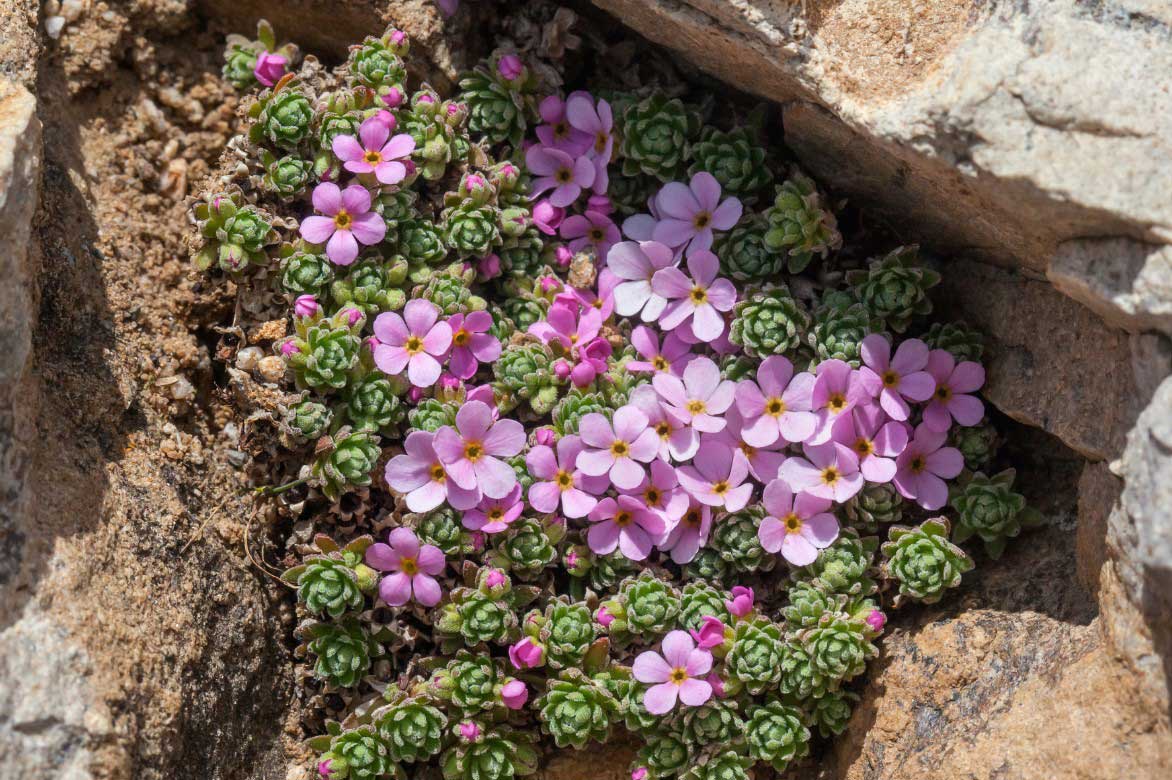
Androsace alpina (photo: John Game)
When to Plant?
You can plant Androsace in early spring, from March to April, or in autumn, from September to November. Avoid frost periods.
How to Plant Androsace?
When planting, ensure you prepare a well-drained soil mix by adding gravel or sand. Limestone and stony soil is ideal, as it replicates the natural conditions of its montane habitat. You can place it between stones to create a favourable microclimate and provide extra protection against excessive moisture. If your soil is naturally heavy or clayey, add more sand and gravel to improve permeability.
- Dig a hole three times wider than the root ball
- Plant the Androsace without burying the collar
- Space each young plant 40 cm apart to avoid competition from other plants
- Backfill with the excavated soil, then lightly firm
- Water generously
Continue watering regularly to ensure establishment.
Maintenance and Care
Very low-maintenance, the Androsace grows on its own, without any care, and does not require watering once well-established. It needs regular watering at the start of cultivation, but this will no longer be necessary afterwards, except during periods of drought, though avoid excessive moisture. Remove faded inflorescences and damaged or dried rosettes from time to time. Clear weeds around the base to reduce competition from other plants.
Every two or three years, divide the clumps to rejuvenate them.
In terms of diseases, the Androsace only fears those related to excess moisture. It is therefore important to plant it in a well-draining substrate. If you live in a rainy region, it is advisable to create a bed of gravel or stones around the rosettes to prevent water from stagnating and causing rot. The pubescent varieties, such as Androsace sarmentosa, are more sensitive than others to winter moisture.
Multiplication
Dividing clumps in spring, on well-established plants, remains the simplest and quickest method to propagate Androsace.
- Lift the root ball with a small hand trowel or transplanting spade.
- Using a sharp knife, separate a few clump divisions, ensuring each has several rosettes and a good portion of attached stolons.
- Replant these divisions immediately in the garden or in pots, using a well-draining substrate.
- Water lightly.
Association in the garden
Androsaces are essential in alpine gardens, where they form stunning tapetum all year round in borders, on walls, or in rockeries. You can easily pair them with other alpine plants and rockery perennials that are not too vigorous and thrive in well-draining substrates. Saxifrages, with their dense foliage and small star-shaped flowers, are excellent companions for Androsace. Gentians, with their intense blue flowers, share Androsace’s preference for calcareous, well-drained soil and good hardiness. With its tolerance for harsh conditions, Edelweiss is a perfect partner, as are Pasque flowers, Alpine erinus, Wall bellflowers, and Sunroses.
For borders, consider ground-covering Sedums, Houseleeks, Stork’s bills, Sea thrift, or Thyme, spacing them adequately to avoid overcrowding.
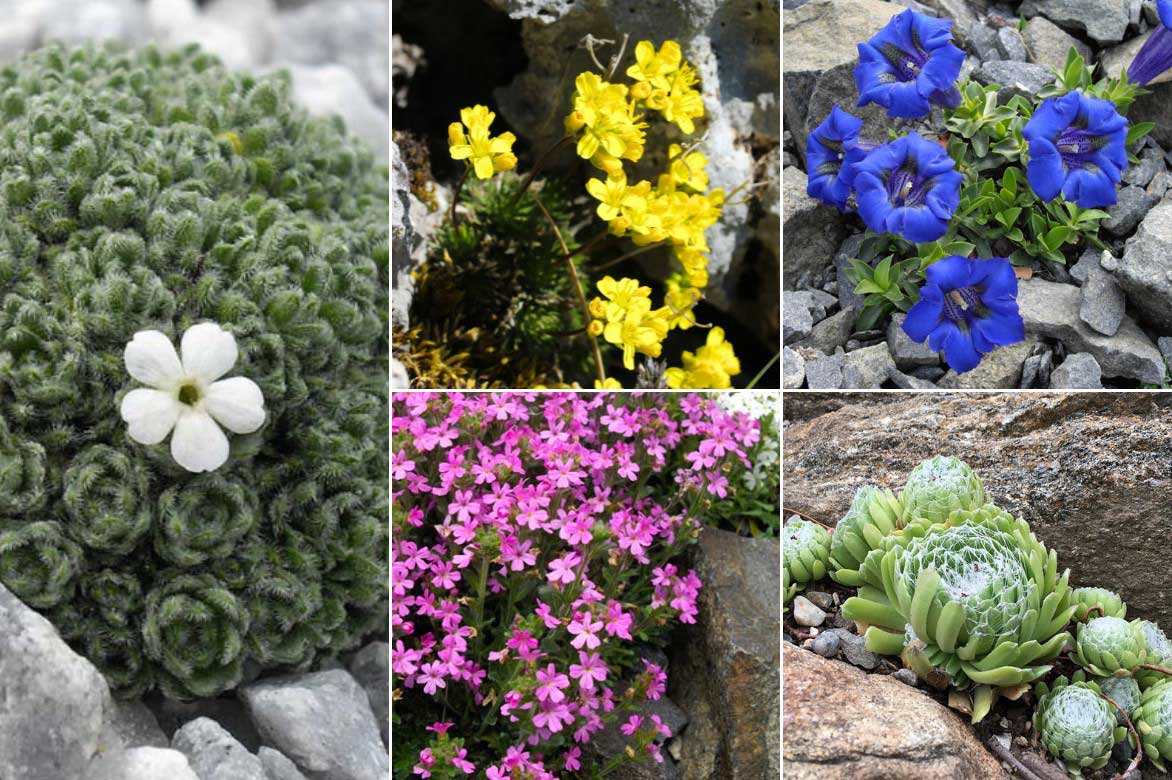
Pair Androsace with other small alpine perennials! Androsace helvetica (photo: Ghislain118), Draba aizoides (photo: Björn S.), Gentiana acaulis, Erinus alpinus ‘Dr Hälne’ and Sempervivum arachnoideum.
Useful resources
- To associate androsaces in your garden, explore our range of rockery perennials
- Subscribe!
- Contents
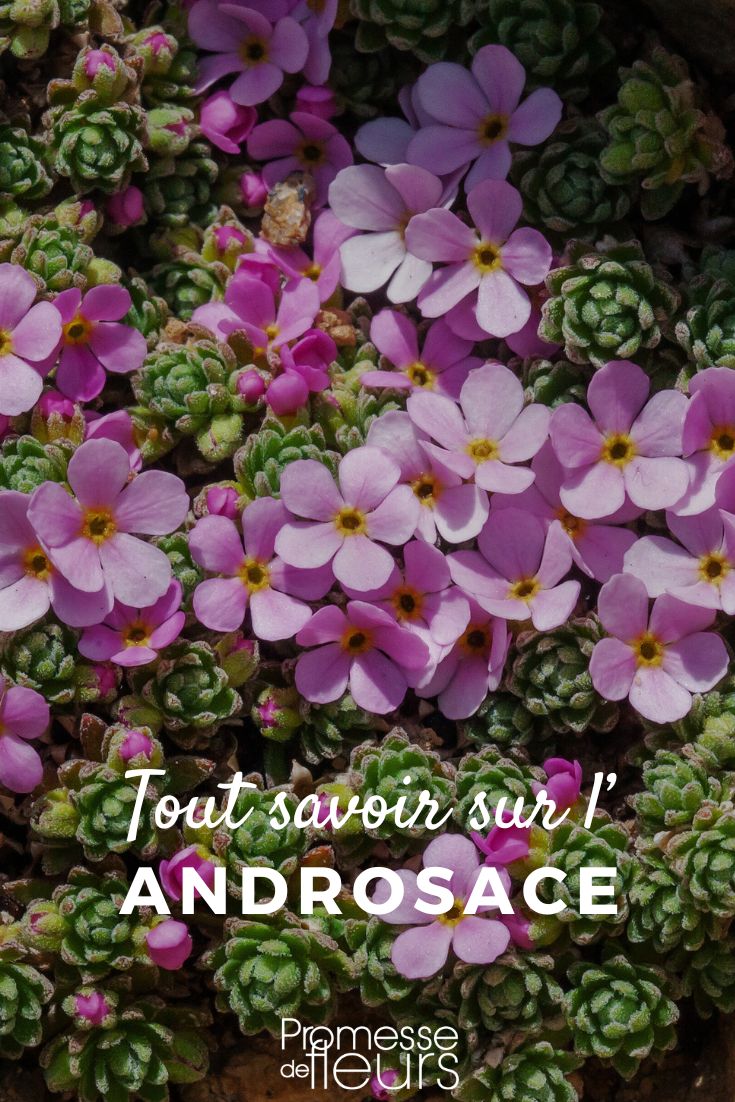































Comments